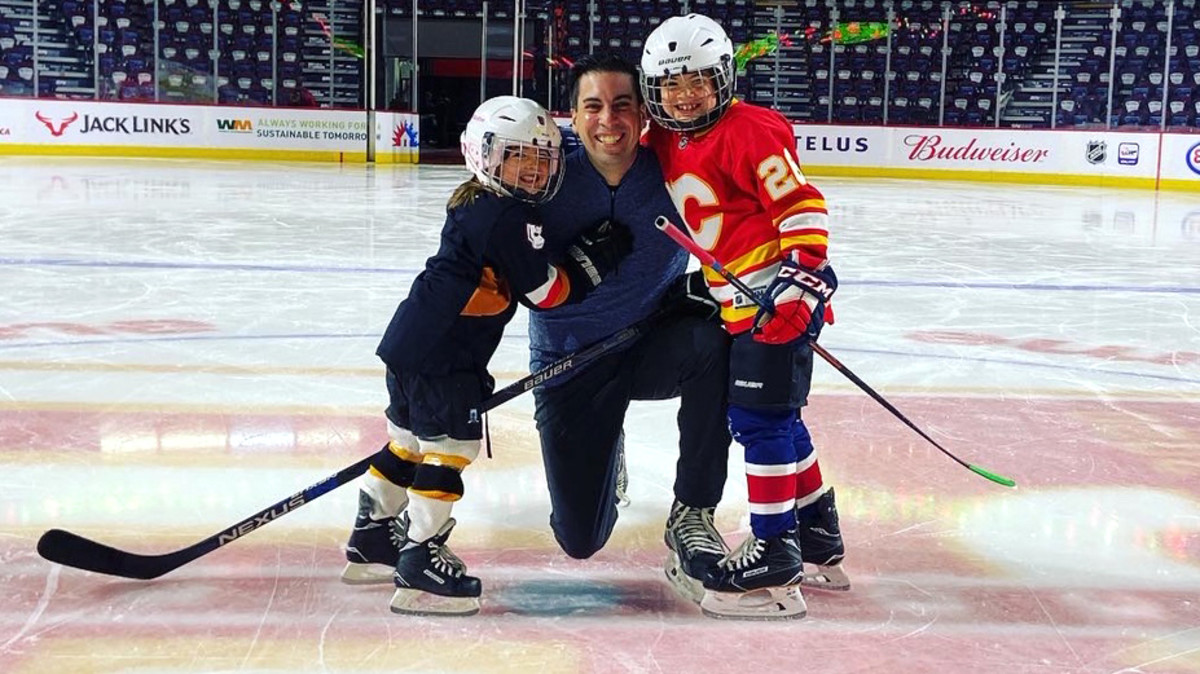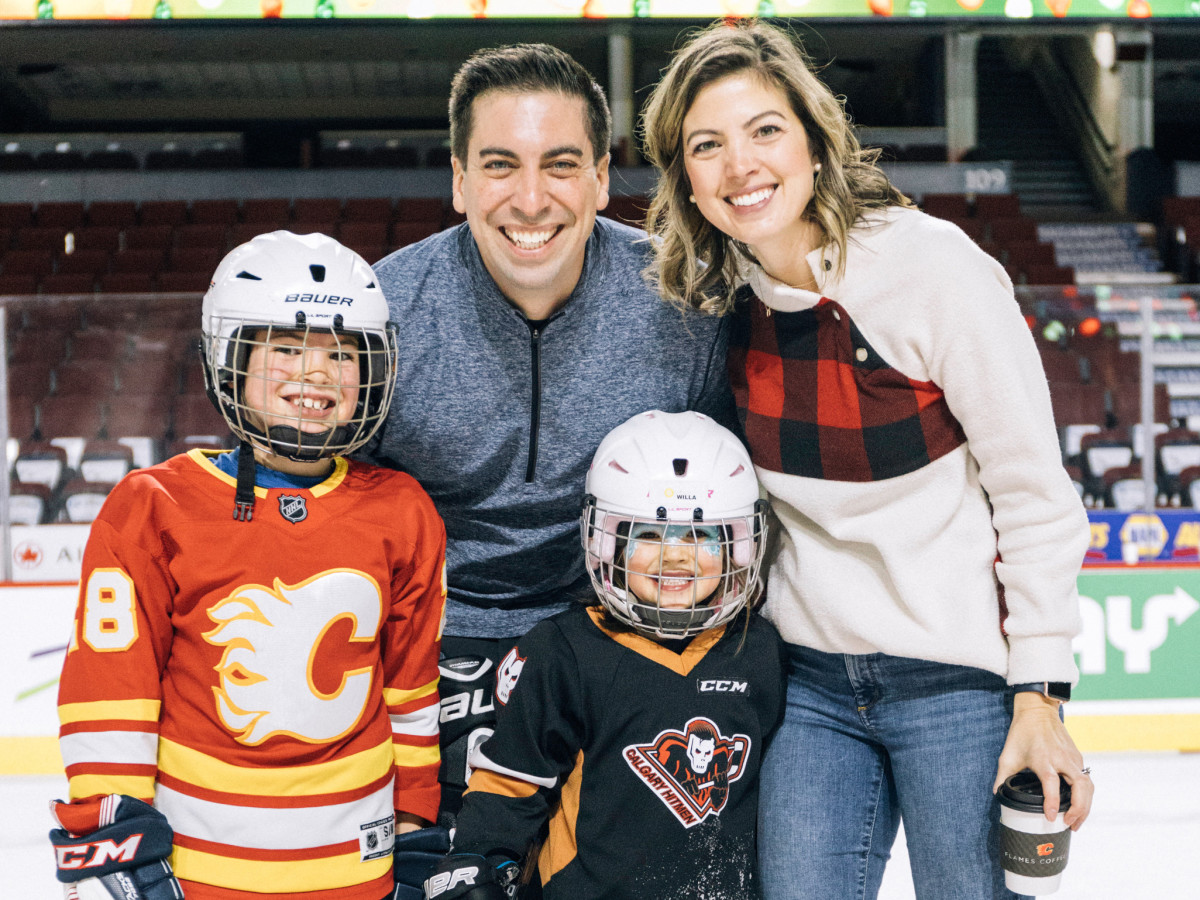Facing a Dire Diagnosis, Flames Exec Chris Snow and His Family Find Hope in Hockey


When I saw my husband on the ice for the first time last fall, skating with so much ease, his body strong and his legs moving how he wanted them to, my breath caught in my chest and tears ran down my cheeks. He shot a puck, and I heard it ping off the crossbar, and it all felt like a miracle.
I didn’t think I’d see that again. Chris, an assistant GM for the Flames, is around hockey every day, but I didn’t think he’d ever skate with our son again, hold a hockey stick again, shoot a puck again.
When Chris was diagnosed with ALS last summer, he had already lost most of the use of his right hand. He couldn’t cut his food or tie his shoes. It was getting harder to button his shirts, turn the key in his car’s ignition and play catch with our son.
Most ALS is sporadic, but Chris’s is familial, caused by a mutated gene that can be passed down. In just two generations, ALS has taken two of his uncles, his 28-year-old cousin and, in 2018, his dad. And as if this disease isn’t cruel enough, their particular mutation is aggressive. The average life expectancy for someone with ALS is three to five years. For Chris it’s six to 18 months.
His symptoms started in April, when he noticed weakness in two fingers. When he was diagnosed in June, my mind began playing out the months ahead. I saw walkers and wheelchairs and breathing machines. I saw a hospital bed in our kids’ playroom, and I wondered how I would get Chris in and out of the car. I thought about the last time I would hear his voice, the last time he’d hug us.

What I knew about ALS was certain—it takes. Every day, it steals another bit of independence. With this disease, we thought there was no good news, but when the doctor diagnosed Chris he also told us about a Phase 3 clinical trial for a promising gene therapy.
Suddenly, we had hope. Real, tangible hope rooted in science and backed by a neurologist who’d spent his career studying ALS. So once a month since, we’ve flown to Toronto so Chris can get 15 milliliters of fluid injected into his spine.
After he began treatment I constantly wanted to ask Chris how he was doing, but I also didn’t want to add to his anxiety. So each morning as I knelt to tie his shoes I would ask if he felt the same as he had the day before, because that’s the dream now—staying the same.
Every morning when he would tell me, “Same,” I’d kiss him goodbye and hope that was true. When October came, Chris couldn’t go on the ice with our son’s hockey team because he couldn’t grip his stick with his right hand. Then the Flames’ equipment manager sewed Chris’s glove into a fist, so he could use it enough to get by.
We didn’t expect he’d be able to shoot with any force, so when he hit the crossbar that day last fall, it told me that the weakness in his hand hadn’t moved to his shoulder. This simple act was hope I could see, hope I could hear. And for the first time in months I let myself think that maybe, somehow, Chris would be O.K.
Still coaching our son’s hockey team, he’s spent hours on outdoor rinks playing shinny. Of course, we know he is living with an illness that, so far, no one has survived. But every time he is able to put on his skates and step onto the ice, I’ll stop and I’ll watch. I’ll see the way he smiles and celebrates a goal with our son. I’ll hear him laugh and watch him catch my eye and wink, and I’ll push aside my fear of losing him and be grateful for another day that Chris has simply, miraculously, stayed the same.
To read more about the Snows’ journey, visit Kelsie’s website at www.kelsiesnowwrites.com or follow her on Twitter (@kelsieswrites). And to learn more about ALS research and donate, go to http://nhl.com/flames/fans/snowystrong.
